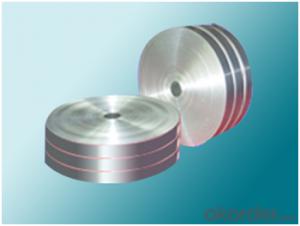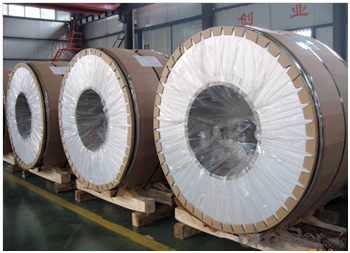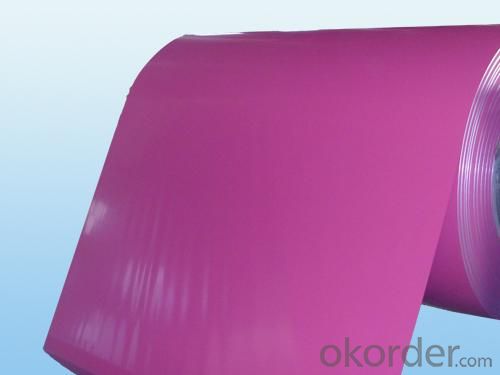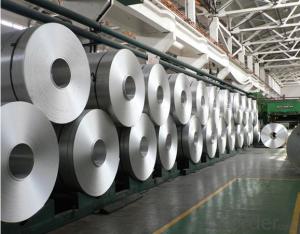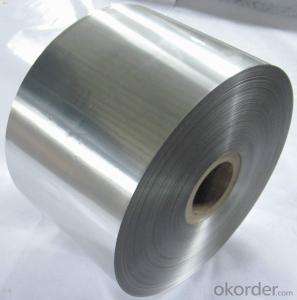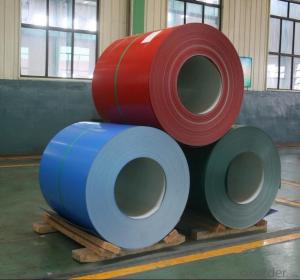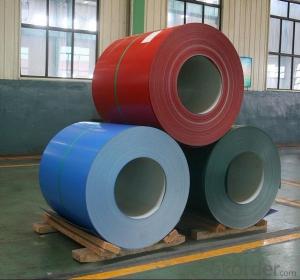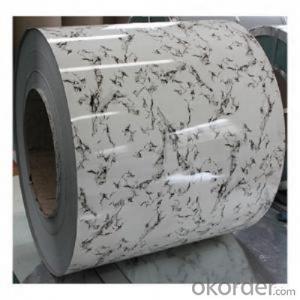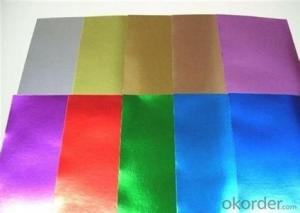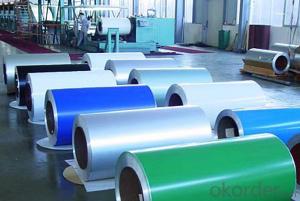Pvdf Coated Color Painted Aluminum Coils for Outer Decoration
- Loading Port:
- Shanghai
- Payment Terms:
- TT OR LC
- Min Order Qty:
- 5 m.t.
- Supply Capability:
- 100000 m.t./month
OKorder Service Pledge
OKorder Financial Service
You Might Also Like
Specification
1.Structure of Color Painted Aluminium Coils for Outer Decoration
Color Painted Aluminium Coils for Outer Decoration is one semi-finished aluminium material. This strip can be rolled down to aluminium coil,sheet,circle ect. The alloy AA1050 is widly used in building, industry ect. Its weight is much lower than steel. So many customers choosed aluminium material instead of steel.
2. Main features of Color Painted Aluminium Coils for Outer Decoration
a.Competitive price---We have our own mills and can produce mill finished aluminium coils, so we can control the production cost better.
b.Professional after-sale service---We have more than 15 years exportation experience and you need not worry about the exporation problems.
c.Fast delivery time---We can control the delivery time within 35 days.
3. Image of Color Painted Aluminium Coils for Outer Decoration
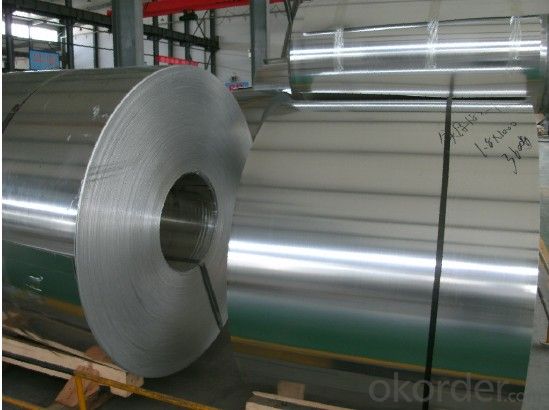

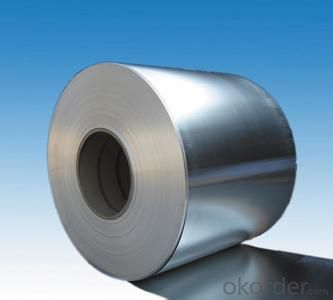
4. Product Specification
| ALLOY | TEMPER | COATING THICKNESS | THICKNESS | WEIGHT |
| AA1050 | F | 22-25 MICRONS | 0.2MM-3MM | 2 TONS |
5.FAQ:
What is the quality standard?
---Usually our standard is GB3880-2006
What is the largest width?
---It is 2300mm
What is the MOQ?
---Usually we can accept 80 tons.
- Q: How long do aluminum coils last?
- The lifespan of aluminum coils can vary depending on various factors such as usage, maintenance, and environmental conditions. However, on average, well-maintained aluminum coils can last anywhere between 15 to 20 years.
- Q: How do aluminum coils contribute to the sound insulation of buildings?
- The unique properties and applications of aluminum coils contribute significantly to the sound insulation of buildings. Being lightweight and flexible, aluminum can be easily shaped into coils, making it an excellent choice for sound insulation purposes. One way in which aluminum coils contribute to sound insulation is by serving as a barrier that prevents the transmission of sound waves. When installed in walls, ceilings, or floors, these coils create an additional layer that effectively blocks and absorbs sound energy. Due to its high density and rigidity, aluminum can reflect and absorb sound waves, thus reducing their intensity as they pass through the building structure. Moreover, aluminum coils can be combined with other soundproofing materials, like foam or fiberglass, to enhance their sound absorption capabilities. By working in conjunction with these materials, aluminum coils create a more comprehensive sound insulation system that traps and dampens sound waves. Another advantage of aluminum coils is their resistance to moisture and corrosion, which makes them suitable for both indoor and outdoor applications. This durability ensures that the sound insulation provided by aluminum coils remains effective over time, even in harsh environments. Additionally, aluminum coils are easy to install and maintain, making them a cost-effective solution for sound insulation in buildings. Their lightweight nature allows for effortless transportation and handling, while their flexibility enables them to be installed in various positions and configurations. To summarize, aluminum coils play a crucial role in sound insulation by acting as a barrier, reflecting and absorbing sound waves, and providing durability and versatility. Their combination with other soundproofing materials further enhances their effectiveness. With their lightweight and flexible properties, aluminum coils offer a practical and cost-effective solution for improving the acoustic performance of buildings.
- Q: I know that Aluminum is a metal, and it's corrosive, but I've been wondering about how Aluminum Foil is created. Is it the same as the metal? Just pounded down? or is it a mixture of different elements?
- www.okorder /
- Q: Can aluminum coils be used in the production of lighting fixtures?
- Indeed, the utilization of aluminum coils is viable in the manufacturing process of lighting fixtures. Being both lightweight and durable, aluminum qualifies as an exceptional metal that effectively resists corrosion, rendering it an ideal preference for the production of lighting fixtures. With the ability to be effortlessly manipulated and molded into diverse configurations and dimensions, aluminum coils can readily accommodate the precise requisites of lighting fixtures. Moreover, aluminum boasts remarkable thermal conductivity, facilitating efficient dissipation of heat within lighting fixtures, guaranteeing optimum performance and durability. In summary, aluminum coils furnish a cost-efficient and adaptable resolution for the production of lighting fixtures.
- Q: I bought a house that is older with aluminum windows, and the last owner did not seem to clean them for quite some time. The aluminum frames are a silvery milky white color and my neighbors that have the same windows look like chrome. I have brushed these windows with scrub brushes and green scouring pads even aluminum wheel cleaner, now my frame is a clean milky grey color, it just isnt polished like my neighbor has it, his is like chrome. I have tried silver polishes and this doesn't remove the grey film either - i need something stronger. Can anyone help???
- Your aluminium windows are possibly anodised which is a process carried out before the windows are assembled.Anodising is like a hard finished skin ,silver in your windows which was probably a semi sheen to begin with, some times this finish oxidises causing this white milky appearance. Anodising can be black,gold red, brown, and possibly other colours too used on motor cycles and sports equipment etc. Your neighbours window were probably anodised and polished (almost like chrome) again this would have been carried out before the windows were assembled. If this is the case no amount of cleaning will polish your anodising to a bright shiny finish. Contact an aluminium window installer/manufacturer as they have cleaning blocks, These look rather like a large pencil eraser containing metallic abrasive particles this may help. Your grey film is lightly to be the original siver turned dull. consult your aluminium window supplier to see if they can offer a better solution It may be possible to spray paint your window frames these would require acid etching and is a specialist procedure hope this is helpful good luck
- Q: What are the factors that determine the price of aluminum coils?
- There are several factors that determine the price of aluminum coils. One of the main factors is the cost of raw materials. The price of aluminum is influenced by factors such as supply and demand, global economic conditions, and production costs. Fluctuations in these factors can directly impact the price of aluminum coils. Another factor that determines the price of aluminum coils is the manufacturing process. The cost of processing aluminum into coils involves various expenses such as labor, energy, and equipment. The complexity of the manufacturing process and the efficiency of the production line can affect the overall cost, which in turn influences the price of aluminum coils. Market conditions also play a crucial role in determining the price of aluminum coils. Factors such as market competition, industry trends, and geographic location can impact pricing. For instance, if there is a high demand for aluminum coils in a particular region but limited supply, the price may increase due to the scarcity of the product. Additionally, transportation and logistics costs contribute to the final price of aluminum coils. The distance between the manufacturing facility and the customer, as well as the mode of transportation, can affect the shipping expenses. These costs are typically factored into the overall price of the coils. Lastly, government policies and regulations can influence the price of aluminum coils. Tariffs, import taxes, and trade agreements may impact the cost of importing or exporting aluminum coils, thereby affecting the final price. In conclusion, the price of aluminum coils is determined by various factors including the cost of raw materials, manufacturing processes, market conditions, transportation costs, and government policies. It is essential for manufacturers and consumers to consider these factors when analyzing and forecasting the price of aluminum coils.
- Q: So on friday we mixed crystaline copper chloride stuffs with water to make a clear blue solution. We then put some aluminum into the solution. The solution began to heat up and there was a redish brown precipitate at the end. What caused the heat? What was boiling? How does the mass of the original aluminum and original copper chloride crystaline stuff compare with the mass of the red/brown power stuff (we strained the liquid out), and the mass of the dried up blue stuff?
- You're looking at a redox reaction. During this process, the copper ions in solution are reduced to form copper metal (visible as dust) and the aluminum metal is oxidized to form aluminum ions. This process is exothermic due to the relative electron affinities and the positions on the activity sequence such that copper has a greater affinity for electrons and is a stronger oxidizing agent. I think aluminum forms a 3+ ion and copper forms either a 1+ or a 2+ ion. Copper's molecular weight is 63g/mol and aluminums weight is 27 g/mol. You would see the weight decrease because aluminum weighs less than Copper and is replaced less frequently due to the higher charge when you figure out the ionics. Nothing was boiling.
- Q: Can aluminum coils be used in electrical applications?
- Indeed, aluminum coils possess the capability for utilization in electrical applications. Its abundance in electrical wiring is attributable to its cost-effectiveness and superior conductivity in comparison to copper. Transformers, motors, generators, and other electrical apparatuses commonly rely on aluminum coils. Nevertheless, it is essential to acknowledge that copper surpasses aluminum in terms of electrical conductivity, necessitating the use of larger aluminum coils to attain equivalent levels of conductivity. Moreover, the implementation of specialized insulation and connectors becomes imperative for aluminum coils to prevent corrosion and guarantee appropriate electrical connections.
- Q: Can aluminum coils be used for automotive applications?
- Yes, aluminum coils can be used for automotive applications. Aluminum coils are lightweight, corrosion-resistant, and have excellent thermal conductivity, making them suitable for various automotive components such as radiators, condensers, and heat exchangers. Additionally, their malleability allows for easy shaping and forming, enabling manufacturers to create intricate designs for enhanced performance and efficiency in automobiles.
- Q: Are aluminum coils suitable for food packaging?
- Food packaging can indeed utilize aluminum coils. Aluminum is extensively employed in the food packaging sector because of its various advantageous characteristics. To start off, aluminum serves as a non-toxic and non-reactive substance, ensuring that harmful substances do not leach into the food. Moreover, it acts as an impermeable barrier to gases and moisture, effectively safeguarding the food from oxygen, light, and moisture that could spoil its quality or alter its taste. In addition, aluminum coils are lightweight, facilitating their transportation and handling. They are also highly malleable, enabling them to be easily shaped and formed into various packaging designs. Additionally, aluminum's heat conductivity properties are commendable, allowing for efficient heat transfer during food processing or cooking. Finally, aluminum demonstrates its commitment to the environment as a sustainable and recyclable material, making it an eco-friendly choice for food packaging. Overall, due to its safety, barrier properties, lightweight nature, flexibility, heat conduction capabilities, and sustainability, aluminum coils are a suitable and widely embraced option for food packaging.
Send your message to us
Pvdf Coated Color Painted Aluminum Coils for Outer Decoration
- Loading Port:
- Shanghai
- Payment Terms:
- TT OR LC
- Min Order Qty:
- 5 m.t.
- Supply Capability:
- 100000 m.t./month
OKorder Service Pledge
OKorder Financial Service
Similar products
Hot products
Hot Searches
Related keywords
